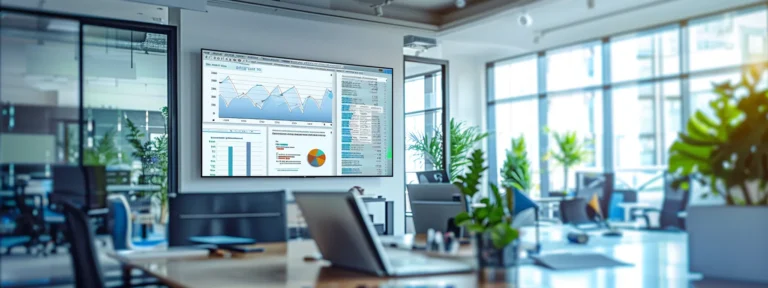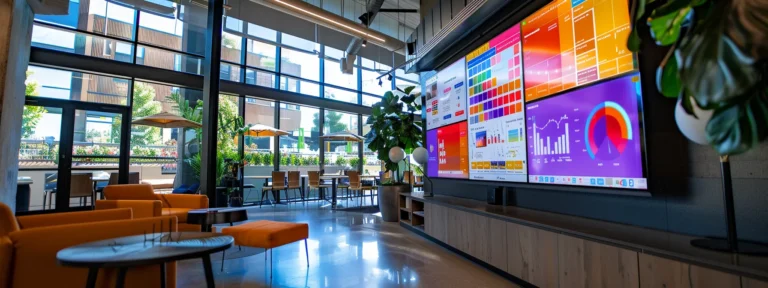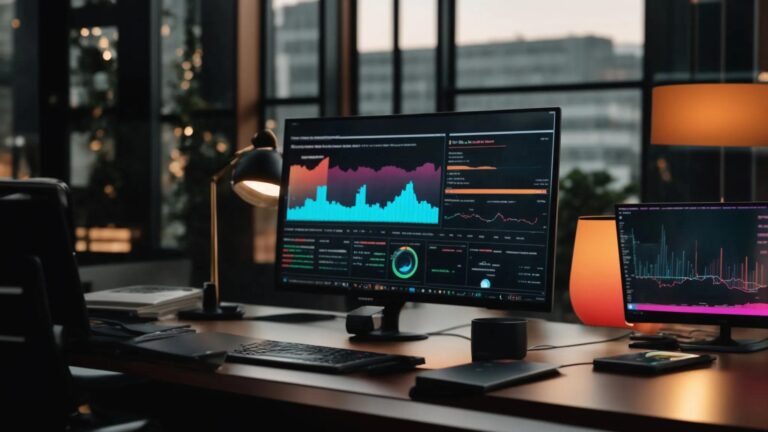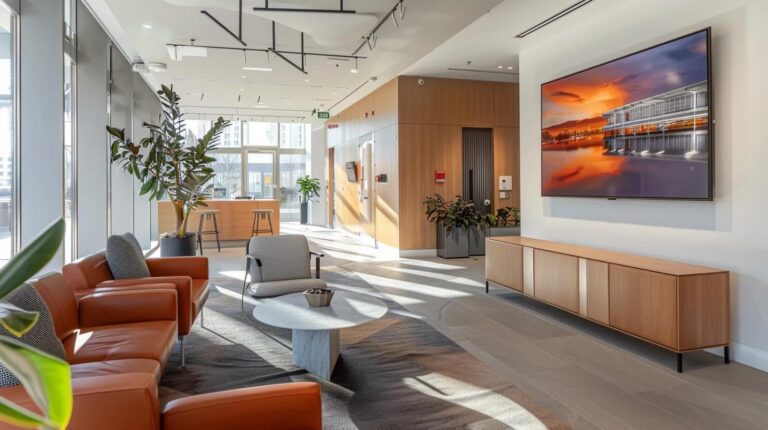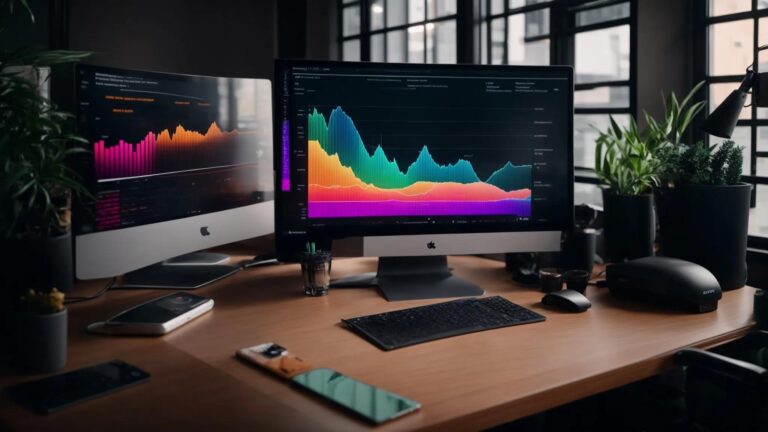Heads Up: When you purchase through links on our site, we may earn an affiliate commission at no cost to you.
Search engines are evolving, and so are users’ ways of searching for information. Traditional text-based searches are being supplemented—and, in some cases, replaced—by visual search technology, which allows users to search using images instead of keywords. With platforms like Google Lens, Pinterest Lens, and Bing Visual Search, users can now upload an image and instantly find relevant search results without typing a single word.
For businesses, visual search optimization is no longer optional—it’s essential for staying competitive. Whether you’re in real estate, e-commerce, or digital marketing, optimizing for visual search in search engine optimization (SEO) can significantly boost brand visibility, improve user engagement, and increase website traffic. With artificial intelligence (AI), machine learning, and deep learning algorithms, search engines are becoming smarter at processing and ranking images, making image optimization a crucial part of any SEO strategy.
In this guide, we’ll explore the importance of visual search in SEO, the best optimization techniques, and how businesses can leverage AI, metadata, and structured data to rank higher in visual search results.
Key Takeaways
- Visual search is transforming SEO: Users are increasingly relying on Google Lens, Bing Visual Search, and Pinterest Lens to find products and services using images instead of text.
- High-quality images improve rankings: Optimizing images with alt attributes, metadata, and structured data ensures better visibility in search engine results pages (SERPs).
- AI and machine learning enhance image recognition: Generative AI and deep learning algorithms help search engines process and rank visual content more effectively.
- Website speed optimization is critical. Using a content delivery network (CDN), compressing images, and enabling lazy loading improve page load times and enhance visual search performance.
- Structured data improves image discoverability: Implementing ImageObject schema, local business schema, and rich snippets increases the chances of appearing in Google Image Search and featured snippets.
- Local SEO is essential for visual search success. Optimizing your Google Business Profile, adding geo-tagged images, and including location-based metadata boosts your rankings in local search results.
- Tracking analytics ensures ongoing optimization. Google Analytics, Google Search Console, and Bing Webmaster Tools help businesses measure visual search traffic, engagement, and conversions.
- Updating content regularly is necessary for sustained rankings: Search engines prioritize fresh, high-quality, and contextually relevant images, making regular content updates essential.
Understanding Visual Search and Its Role in SEO

What Is Visual Search?
Visual search technology allows users to use images instead of text-based queries. Powered by AI, machine learning, and computer vision, search engines analyze images to identify objects, text, and colors and then return relevant search engine results based on the image content.
How Visual Search Works in Search Engines:
- Google Lens allows users to snap a photo of a product, landmark, or property and receive real-time search results.
- Pinterest Lens: Helps users find visually similar products or home décor ideas based on uploaded images.
- Bing Visual Search: Uses AI-powered image recognition to allow users to find related information by uploading an image.
With the increasing adoption of smartphones, AI-driven search algorithms, and voice-activated assistants, visual search is rapidly transforming how users interact with search engines.
Why Visual Search Matters for Digital Marketing
As users shift towards visual-first search behavior, businesses must adapt their SEO strategies to remain visible in image-based search results.
Key Benefits of Visual Search Optimization:
- Enhanced User Experience: Visual search makes it easier for users to find what they need quickly and efficiently.
- Higher Engagement Rates: Studies show that users are more likely to engage with visually rich search results.
- Improved Local SEO Rankings: Businesses optimizing for visual search and local SEO gain an edge in location-based searches.
- Increased Website Traffic: Well-optimized images drive organic traffic from Google Images, Pinterest, and Bing Visual Search.
By investing in visual search optimization, brands can increase visibility, improve discoverability, and generate more qualified leads.
- Instant feedback
- Valuable insights
- Actionable tips
Best Practices for Visual Search Optimization
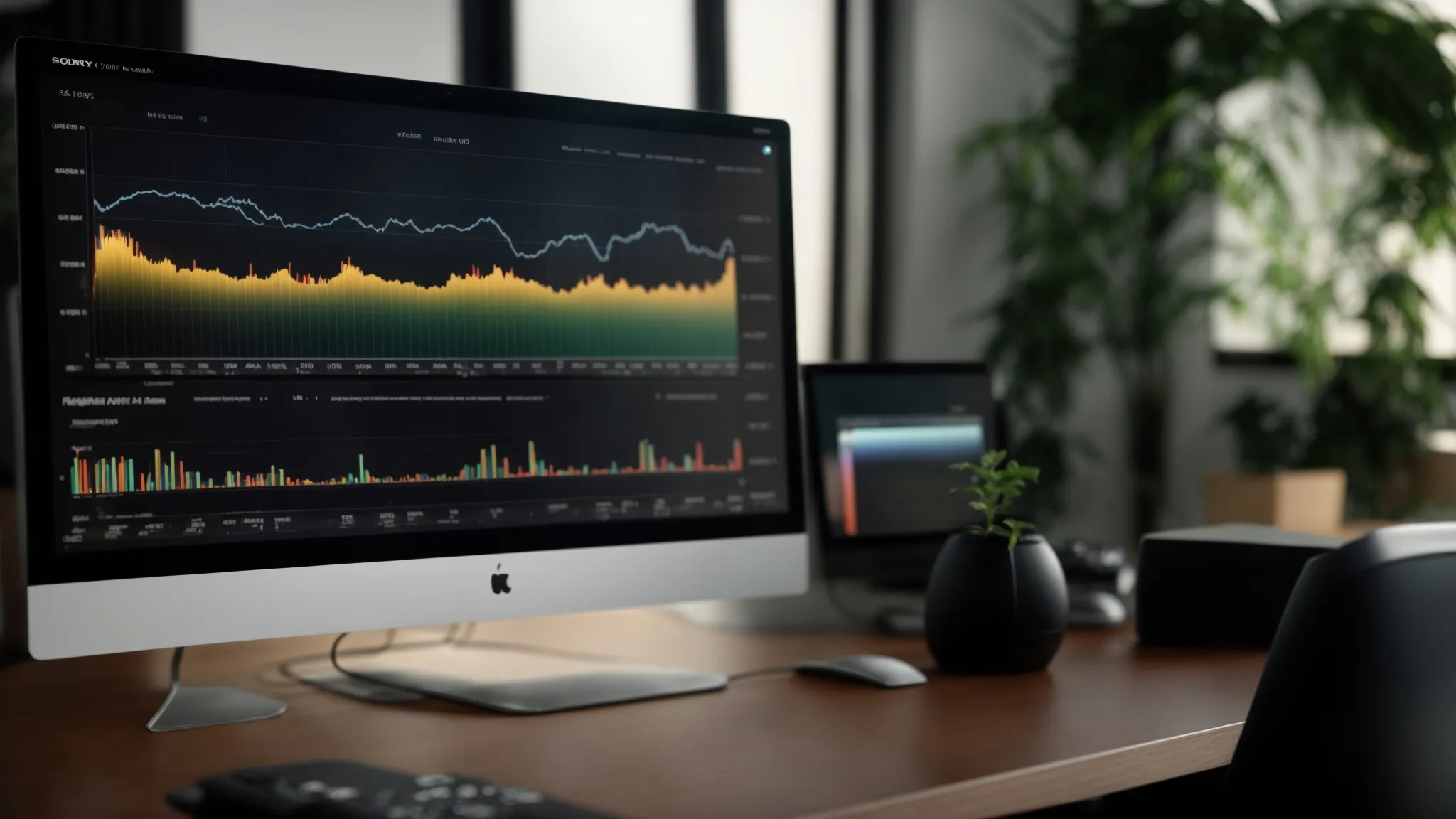
Using High-Quality Images and Metadata
Optimizing images for visual search involves more than uploading high-resolution photos. Search engines analyze various attributes of an image, including alt text, file names, and metadata, to determine relevance and ranking.
How to Optimize Images for Visual Search:
- Use High-Resolution Images: Search engines prefer clear, high-quality images over pixelated or low-resolution visuals.
- Optimize Alt Attributes: Every image should have descriptive alt text that explains the content of the image (e.g., “Luxury waterfront home in Miami with an infinity pool”).
- Rename Image Files Properly: Instead of using generic file names like IMG1234.jpg, use SEO-friendly filenames like luxury-condo-downtown-los-angeles.jpg.
- Include Relevant Metadata: Adding meta descriptions, captions, and structured data improves an image’s discoverability in search engines.
- Use Multiple Image Formats: Supporting formats like WebP, PNG, and JPEG ensure that images load faster and display correctly across devices.
Optimized image metadata and file names help search engines accurately categorize and rank visual content, making images more likely to appear in Google Images and Bing Visual Search results.
Optimizing Images for Search Engines
For search engines like Google, Bing, and Pinterest, properly optimized images increase organic visibility and drive traffic to websites. Since search engine algorithms prioritize images that enhance user experience, businesses must focus on proper formatting, loading speed, and usability.
Best Practices for Image Optimization:
- Compress Images for Faster Load Times: Large image files slow down website speed, which negatively impacts SEO rankings. Use tools like TinyPNG or ImageOptim to reduce file sizes without losing quality.
- Enable Lazy Loading: This technique ensures that images only load when they come into view, improving page speed and performance.
- Add Structured Data Markup: Use schema markup for images to help search engines understand their context and relevance in search results.
- Ensure Mobile Compatibility: Since most searches occur on smartphones, images must be responsive and optimized for mobile viewing.
By following these techniques, businesses can improve their image rankings, increase organic search traffic, and boost their overall SEO performance.
Leveraging AI and Machine Learning for Image Recognition
With advancements in artificial intelligence (AI) and machine learning, search engines are now capable of analyzing images with greater accuracy. Technologies like Google Vision AI, Amazon Rekognition, and Microsoft Bing Visual Search use deep learning algorithms to classify images, recognize text, and enhance search results.
How AI Impacts Visual Search Optimization:
- Generative AI Enhances Image Recognition: AI-powered tools analyze color patterns, object shapes, and text overlays to provide better search matches.
- Voice Search and Visual Search Integration: Devices like Amazon Alexa and Google Assistant combine voice and image search capabilities, making it easier for users to find products and services.
- Personalized Search Experiences: AI enables search engines to refine visual search results based on user behavior and past interactions.
- E-Commerce and Real Estate Applications: Retailers and realtors use AI-driven visual search to match listings with buyer preferences based on uploaded images.
By leveraging AI-powered search technology, businesses can ensure greater visibility in visual search results, leading to higher conversions and better engagement rates.
Technical SEO Strategies for Visual Search

Enhancing Website Speed and Usability for Visual Search
Search engines prioritize fast-loading websites in search rankings, making page speed optimization critical for visual search performance. Since image-heavy pages can slow down load times, optimizing for speed and usability ensures that search engines can efficiently index and rank images.
How to Improve Website Speed for Visual Search SEO:
- Use a Content Delivery Network (CDN) – A CDN caches images across multiple servers worldwide, reducing load times for users.
- Compress Large Image Files – Use tools like TinyPNG, ImageOptim, or Photoshop to reduce image size without sacrificing quality.
- Enable Browser Caching – Storing frequently accessed images locally allows for faster load times when users revisit a site.
- Optimize Mobile Performance – Google prioritizes mobile-friendly websites, so images must be responsive and load efficiently on all devices.
- Reduce Server Response Time: A fast server and efficient hosting solution ensures that images load quickly and improve SEO rankings.
By improving website speed and usability, businesses enhance user experience, which leads to higher engagement and better visual search performance.
Implementing Structured Data for Visual Search
Structured data (also known as schema markup) helps search engines understand and categorize images, making them more likely to appear in rich search results and featured snippets.
Best Practices for Structured Data in Visual Search Optimization:
- Use ImageObject Schema – This helps search engines identify images correctly and display them in Google Image Search results.
- Implement a Product Schema for E-Commerce. Product listings with structured data allow Google Lens and Pinterest Lens to provide detailed search results.
- Utilize LocalBusiness Schema for Real Estate: Realtors can tag property images with structured data, improving their local search visibility.
- Include Descriptive Alt Attributes—To enhance search engine indexing, Ensure that all images have clear, keyword-rich alt text.
- Optimize for Google Knowledge Graph – Structured data helps businesses increase credibility and visibility in visual search marketing.
By incorporating structured data, businesses improve their image discoverability, helping search engines deliver relevant visual search results.
Integrating Visual Search with Local SEO and Google Business Profile
For businesses with physical locations, optimizing Google Business Profile (GBP) and local SEO strategies is crucial for visual search rankings. Since users frequently search for nearby products and services using Google Lens, businesses must enhance their visual presence in local search results.
How to Optimize for Local Visual Search SEO:
- Ensure Accurate NAP Information (Name, Address, Phone Number) – Consistency across Google Business Profile, Yelp, and social media helps boost local search rankings.
- Upload High-Quality Business and Product Images – Google prioritizes businesses with clear, well-optimized images in local search results.
- Use Geo-Tagged Images – Adding location metadata to images improves their visibility for location-based searches.
- Encourage Customer Reviews with Photos – Businesses with user-uploaded images and positive reviews tend to rank higher in Google Visual Search.
- Optimize Local Listings for Visual Search Queries – Ensure that business profiles include rich media, descriptions, and relevant visual content.
By integrating visual search techniques with local SEO, businesses increase their chances of ranking in Google’s Local Pack, Google Images, and Google Lens results.
Tracking Visual Search Performance and Refining Strategies
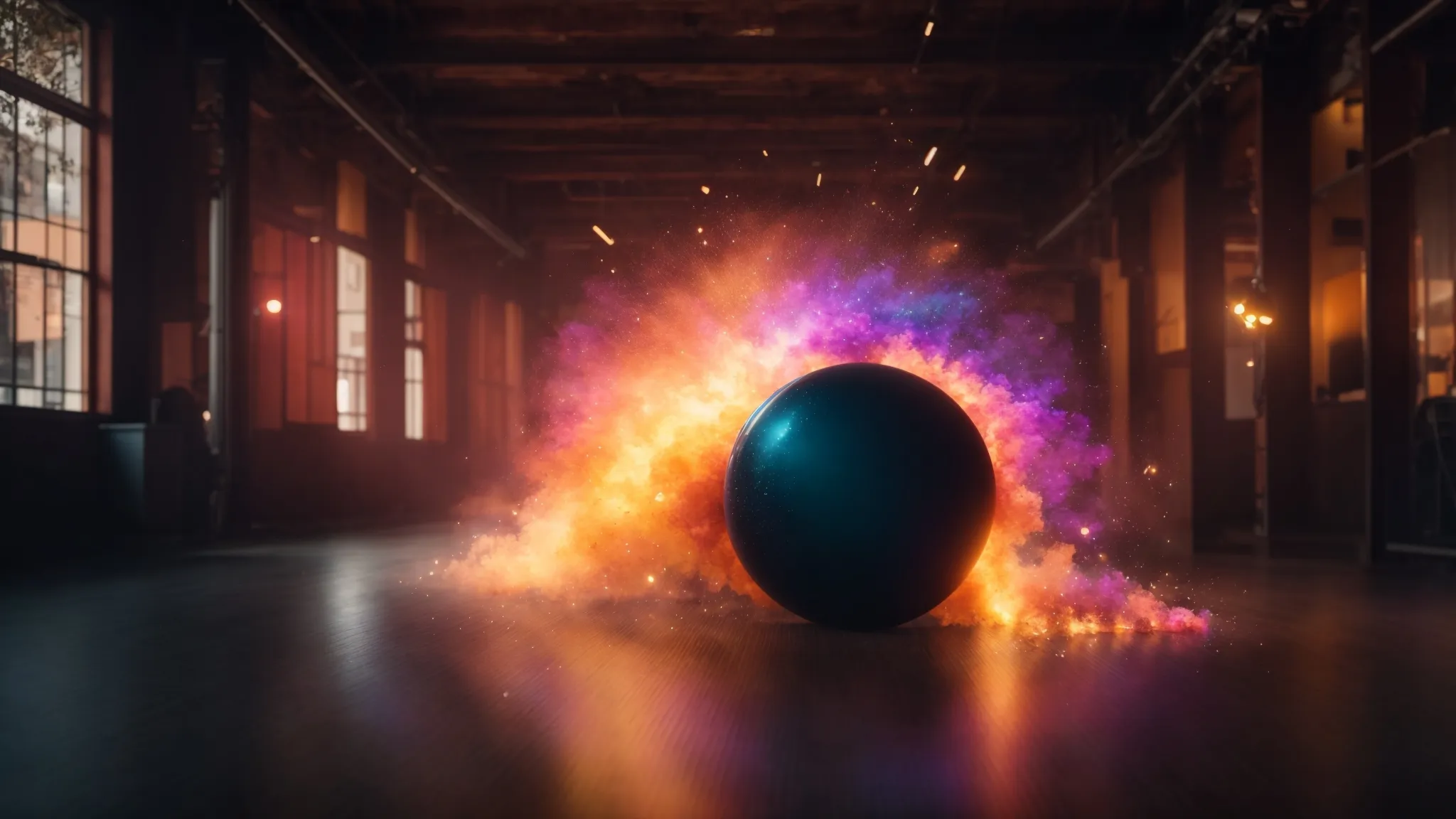
Optimizing for visual search is not a one-time task; it requires continuous monitoring and refinement. By tracking key performance metrics, businesses can evaluate their visual search rankings, engagement rates, and image-based traffic to fine-tune their SEO strategies.
Using Analytics to Measure Visual Search Traffic
To understand how visual search impacts SEO, businesses must use analytics tools to track image-driven search performance.
Best Tools for Monitoring Visual Search SEO:
- Google Search Console – Tracks image search impressions and identifies top-ranking visual content.
- Google Analytics – Analyzes visual search traffic, engagement rates, and bounce rates for image-based searches.
- Microsoft Bing Webmaster Tools – Provides insights on Bing Visual Search performance and image indexing.
- Semrush & Ahrefs – Monitors backlinks and keyword performance for image-optimized content.
- Pinterest Analytics – Tracks how visual content performs on Pinterest Lens, providing data on engagement and shares.
By leveraging these tools, businesses can track which images rank well, which content drives the most engagement, and where optimization efforts need improvement.
Adjusting Content for Future Visual Search Trends
With advancements in AI and machine learning, visual search algorithms are constantly evolving. To maintain high rankings in visual search results, businesses must stay ahead of emerging trends and update their SEO strategies accordingly.
How to Keep Up with Visual Search Trends:
- Monitor Google’s AI Updates – As Google Vision AI continues to evolve, search engines will prioritize image relevance and metadata accuracy.
- Enhance Personalization in Visual Search – AI-driven search engines tailor results based on user behavior, making customized image content crucial.
- Optimize for AI-Generated Image Recognition – With the rise of deep learning and generative AI; businesses should focus on semantic image tagging and contextual relevance.
- Update Visual Content Regularly – Fresh, high-quality images signal relevance to search engines, improving visual search rankings.
- Expand Image Optimization Beyond Google – Optimizing for Bing Visual Search, Amazon Visual Search, and Pinterest Lens diversifies traffic sources and reach.
By analyzing visual search data and refining strategies, businesses can continuously improve their discoverability and engagement in image-based search results.
Frequently Asked Questions
What is visual search optimization?
Visual search optimization is the process of making images more searchable by using alt text, metadata, structured data, and AI-driven techniques to enhance their visibility in search engines like Google and Bing.
How does visual search impact SEO?
Visual search improves organic rankings and user engagement by allowing search engines to process images more efficiently. It increases the chances of appearing in Google Image Search and visual-first search results.
Which industries benefit most from visual search optimization?
Industries such as real estate, e-commerce, fashion, home decor, and travel see the most impact from visual search, as consumers rely heavily on image-based searches for decision-making.
How can businesses improve their visual search rankings?
Businesses can optimize image file names, add alt text, implement structured data, compress images for faster loading, and update visual content regularly to improve rankings.
What role does AI play in visual search?
AI and machine learning algorithms like Google Vision AI help search engines analyze images based on color, shape, objects, and context, improving search relevance.
How does structured data help with visual search?
Structured data, such as schema markup (ImageObject, Product, LocalBusiness, etc.), helps search engines understand image content, increasing visibility in Google Images and featured snippets.
What tools can track visual search performance?
Google Search Console, Google Analytics, Bing Webmaster Tools, Semrush, and Pinterest Analytics help businesses monitor image search traffic and engagement metrics.
Why is local SEO important for visual search?
Many users search for local businesses using Google Lens and image-based queries, making Google Business Profile optimization, geo-tagging images, and local citations crucial for local search rankings.
Conclusion
As visual search technology continues to evolve, businesses must adapt their SEO strategies to remain competitive in an increasingly image-driven digital landscape. Optimizing for visual search is no longer optional—it’s essential for improving brand visibility, user experience, and organic search rankings.
By focusing on high-quality image optimization, structured data implementation, and AI-driven search strategies, businesses can enhance their presence in Google Images, Bing Visual Search, and other visual search platforms. Additionally, leveraging local SEO techniques and optimizing Google Business Profile ensures that businesses appear in location-based image search results, boosting customer engagement and conversions.
Moving forward, continuous monitoring and refinement of visual search performance will be key. By staying ahead of search algorithm updates, tracking analytics, and updating image content, businesses can maintain high rankings in visual search results, unlocking new opportunities for traffic, leads, and revenue growth in the digital marketing space.




